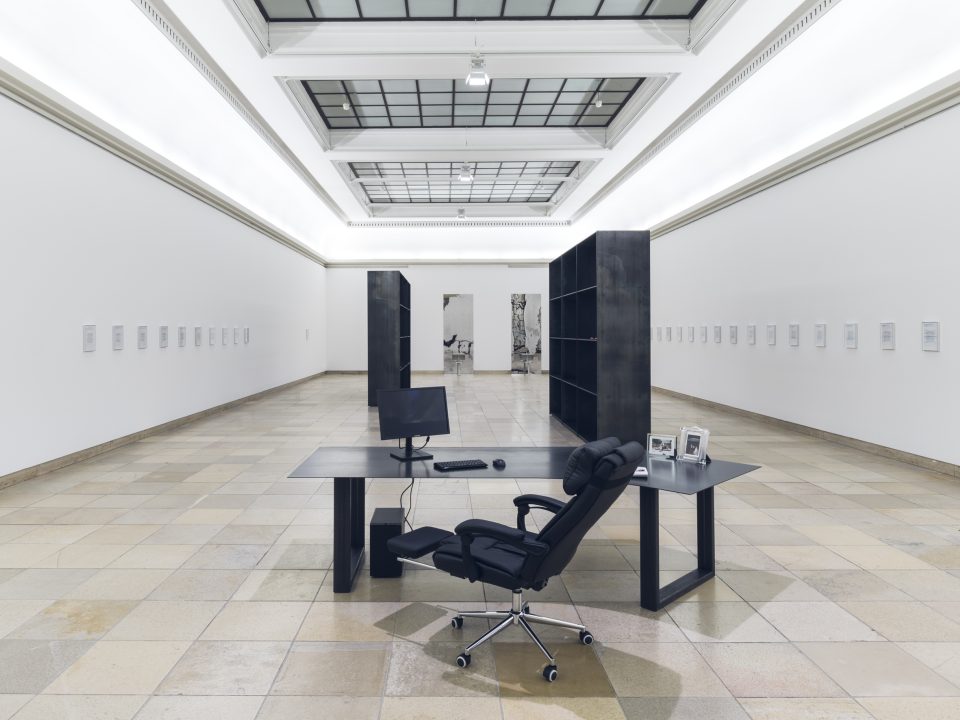An insight into Sung Tieu's extensive new production Zugzwang, the largest and most comprehensive work by the German-Vietnamese artist to date.
Zugzwang by Sung Tieu (b. 1987) is among the latest of Haus der Kunst’s ‘Capsule’ exhibitions, a series which annually invites two internationally-renowned artists to develop new works. The work is a multi-perspectival installation exploring how personal narratives and bureaucracy intertwine. Marrying the account of a fictional bureaucrat, Mr Stevens, with references to the artist’s childhood years after arriving as an informal migrant from Vietnam to Germany in the early 1990s, Zugzwang is far from being (auto)biographical. It instead crafts an imagined, Minimalism-inspired ‘office’ where the artist interweaves real and fictitious accounts, personas, documents and objects. These reflect how bureaucratic processes – particularly those for asylum-seekers – often corner applicants into precarious positions of disadvantage (captured by the eponymous German chess-term ‘Zugzwang’). The work is moreover riddled with in-jokes and a myriad of meanings which reveal themselves when read in conjunction with Tieu’s past practices.
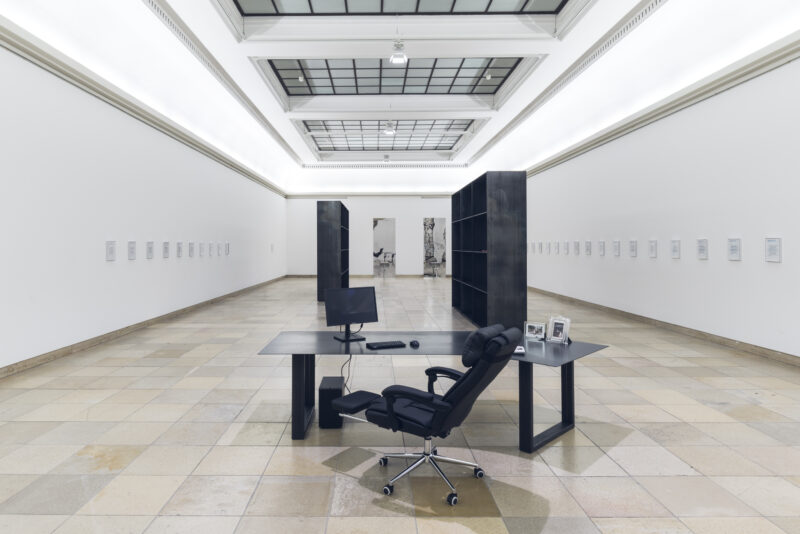
Grid Structures
One of the most striking features of Zugzwang is the presence of geometric formations. Two imposing shelving units occupy the central space. These are flanked by a linear formation of application forms and three symmetrically-arranged mirrors. For visitors familiar with Tieu’s practice, this constellation immediately echoes her long-standing interest in Minimalism and grid structures which she recurrently employs to create a “modular approach” in her installations, in the words of art historian Pamela Corey.
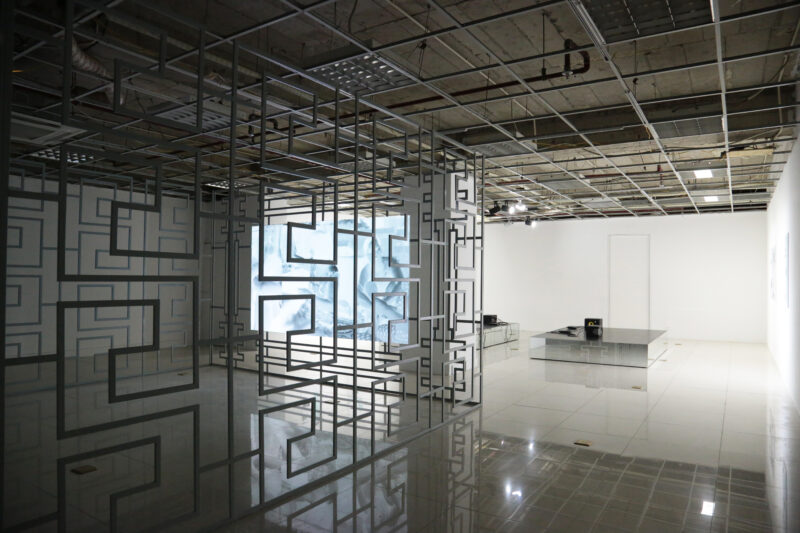
In Remote Viewing (2017), Tieu constructed a geometric enclosure based on a Vietnamese lattice pattern often encountered in architectural and temple decoration. Displayed together with the video work No Gods, No Masters (2017) addressing Vietnamese spirituality and psychological warfare from the late 1960s to the present, this grid also evoked notions of mapping, transparency and surveillance technologies as deployed in military and state operations.
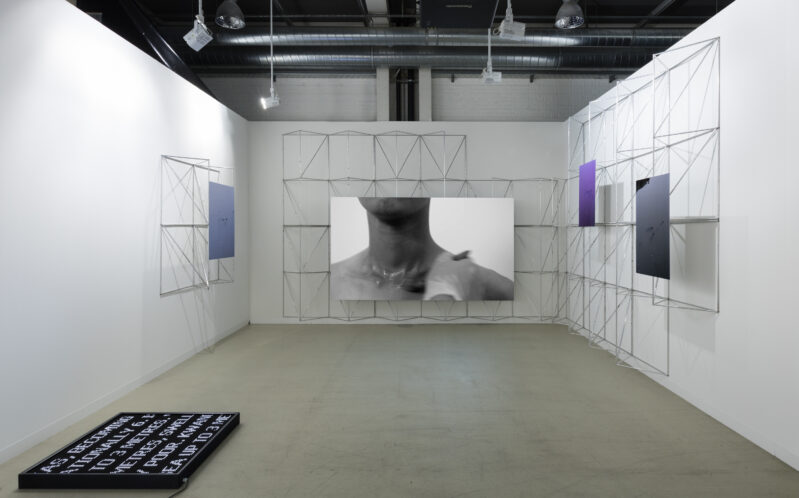
Elsewhere in Coral Sea As Rolling Thunder (2017), a three-dimensional lattice served as a framing and supporting structure for a film on environmental destruction. Here, Tieu alludes to how man-made structures often take inspiration from natural forms, yet also destroy the very ecologies they seek to emulate.
In both works, the grid is not a fixed or neutral structure. It evokes the interplay between transparency, design and control, and thus challenges preconceptions of order and hierarchy. These ideas reverberate powerfully in Zugzwang where, on the one hand, the central shelving units gesture towards bureaucratic tropes such as filing systems, archives, cubicles, office buildings etc.. On the other hand, they assign no visible order or ranking to the objects on display. The viewer is instead left to decipher new threads of meaning across these objects which all speak to the themes of individual willpower, compassion and perseverance in the face of legal procedures.
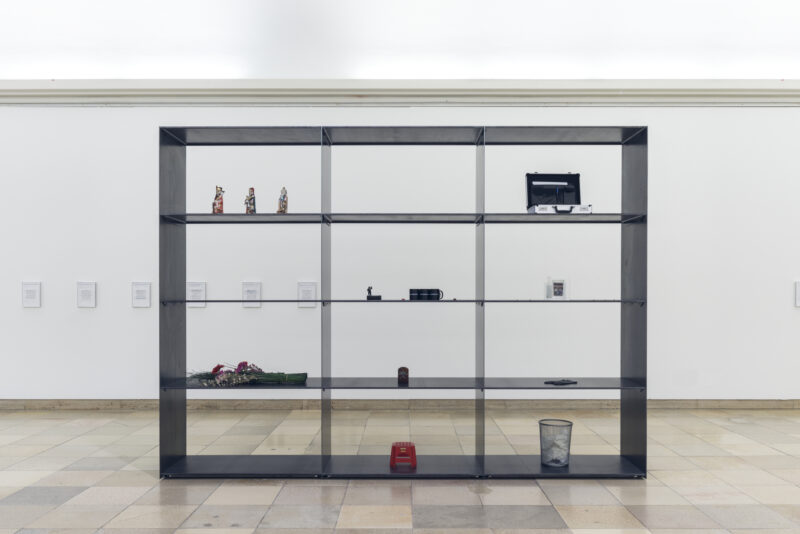
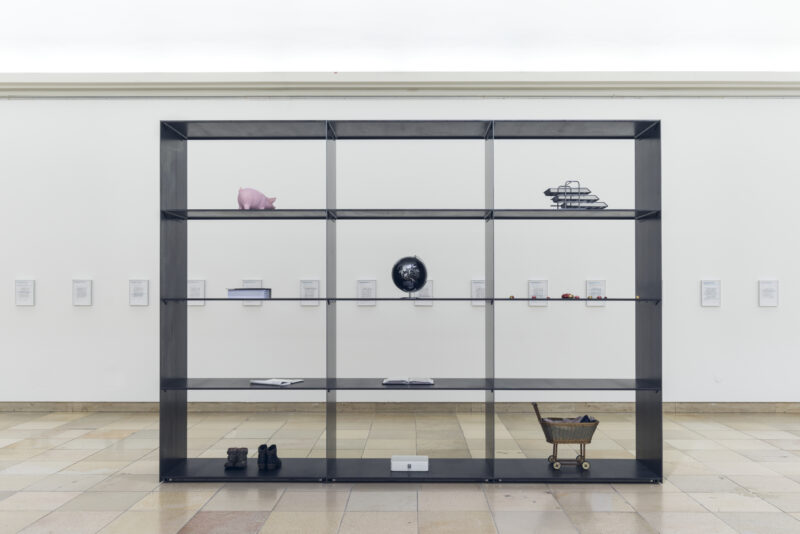
Document Interventions
For visitors entering into Zugzwang’s imaginary ‘office’, an unfolding chess game superscribed upon a series of application forms (a work titled Alekhine’s Defence) offers a natural guiding point along the walls. These are based on existing official documents – or more precisely, a ten-page application form for asylum status, one registration form, and a twenty-page citizenship application form - whose originals the artist has altered for this work. For instance, they appear devoid of markers of any specific nationality, thus conveying broader migrations from the ‘Third World’ to the ‘First World’.
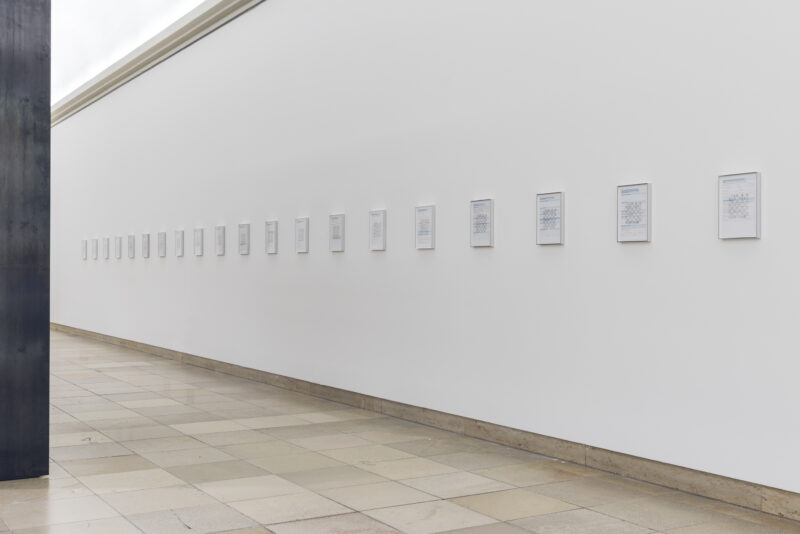
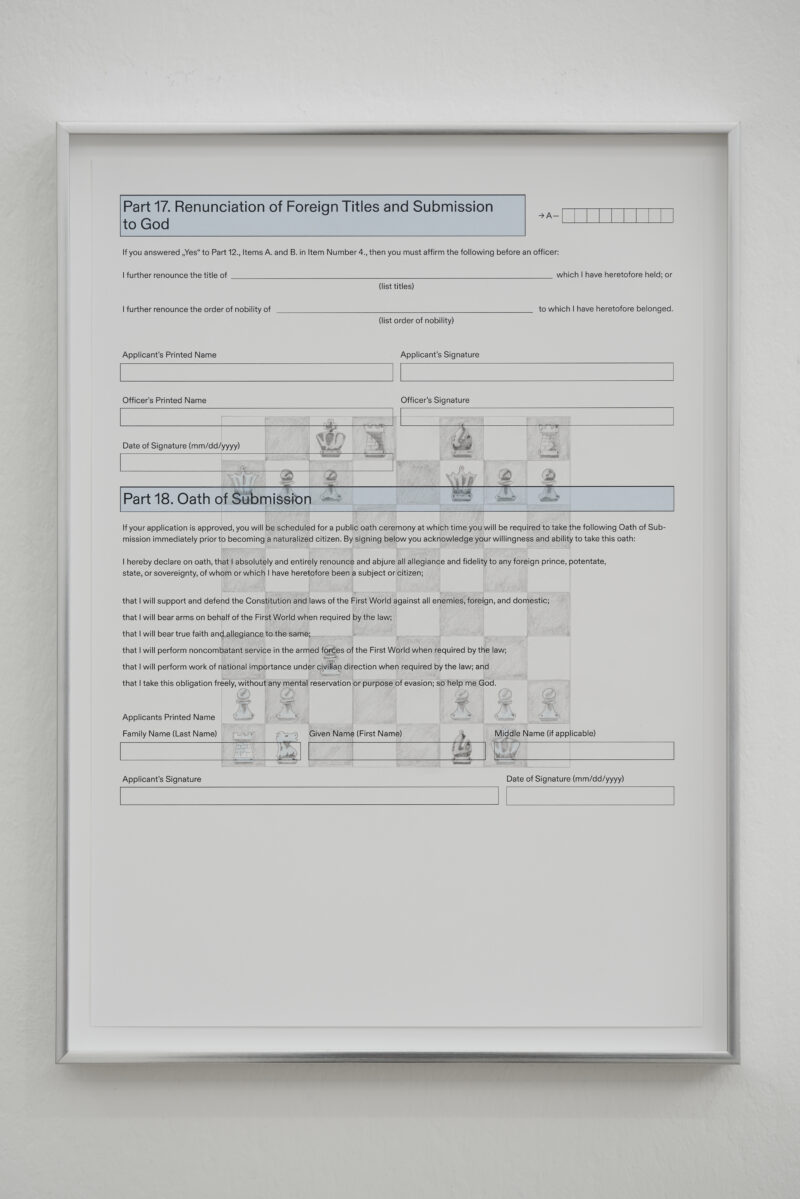
Tieu’s interest in modifying existing documents references an earlier project titled Formative Years on Dearth (2019) for which she researched the archive of British conceptual artist John Latham (1921-2006). In this work, Tieu did not seek to produce new understandings of Latham’s practice, which has already been the subject of extensive art historical inquiry. Instead she sought to ‘filter’ the archive via her own subjective experiences. She interconnected her biography with that of Latham by way of displaying correspondence, documents, photographs and clippings referencing Germany, the Fluxus movement and transnationalism, among other themes. The final exhibition comprised a loose and imaginative extraction of information. Going as far as to erase entire passages and phrases from the original contents, Tieu’s ‘intervention’ emphasised how archives rarely accommodate the complexity of individual subjectivities.
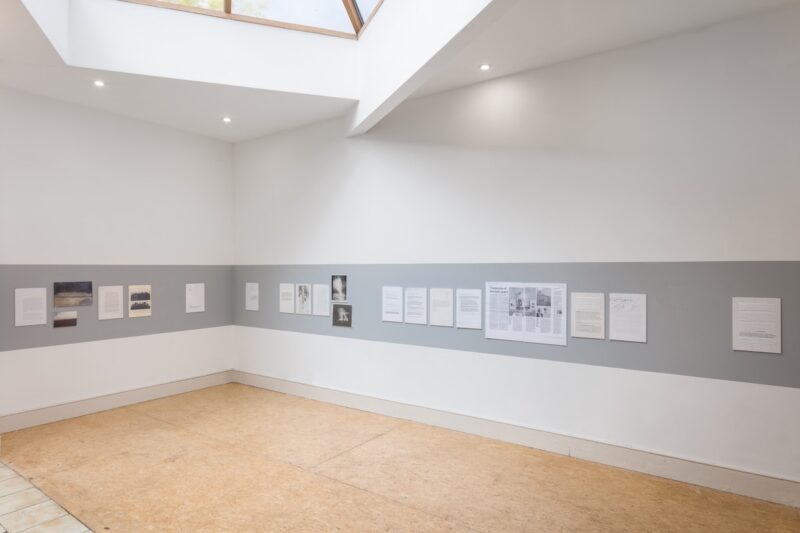
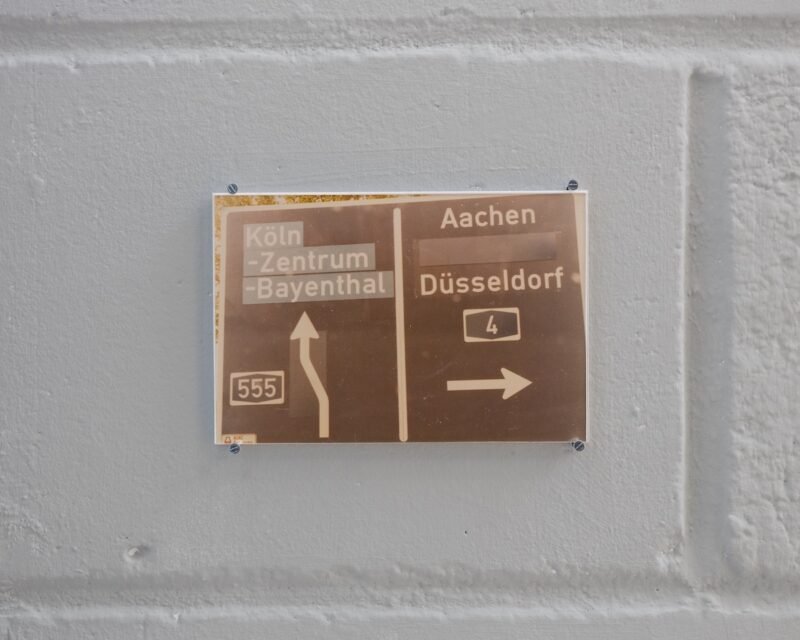
A similar self-insertion occurs in Zugzwang where the artist once again ‘filtered’ documents to reflect her interest in economic and interpersonal entwinements. By displaying the application forms on eye-level, Tieu further invites Zugzwang’s visitors to imagine themselves as part of the bureaucratic process; they are called upon to consider how they would respond to the questions and, in doing so, partake as one of the ‘subjectivities’ in the exhibition alongside the artist, her mother, the fabricated Mr Stevens, and countless unnamed applicants.
Fiction-Reporting
Tieu’s invitation to engage with/as multiple subjectivities is most poignantly fleshed out in a series of fictitious articles interspersed across the exhibition. One article titled ‘Manning The Deck’ is displayed on a reflective magnet pin-board. It presents a biographic reportage on James Stevens, a fictional bureaucrat and “leading Irish civil servant in Brussels”, recounted by yet another fabricated author, Quentin Lentini (a humorous jibe towards the exhibition’s curator). A second article titled ‘Citizen Of Nowhere’ rests on the desk beneath a mug as if it had just been read, whereas a third, ‘Borders 2.0’, is displayed on the shelves. Formatted in the style of newspaper columns, these texts imitate real-life press reporting while recounting invented anecdotes, scenarios and personas. They simultaneously convey the social and political concerns behind the work, all the meanwhile parodying media practices which all-too-readily sensationalise and feed into prejudices.
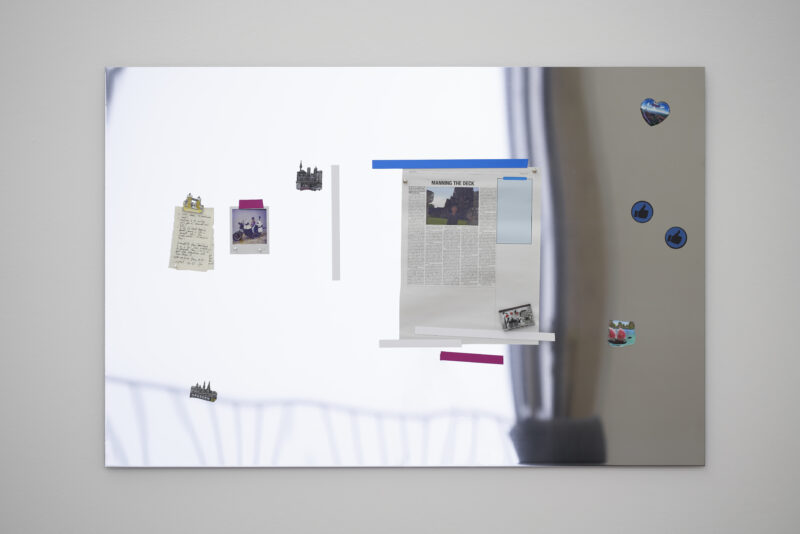
Tieu has deployed such ‘fiction-reporting’ across a number of her works, most notably in the 2019 trilogy Loveless, Formative Years on Dearth and Parkstück. These multimedia installations tackle how public spaces and buildings express - and exacerbate – gentrification, on the one hand, and the living conditions of low-income sections of society on the other. Tieu’s articles appear throughout these works, presenting fictionalised accounts which, at times, border on the farcical. In Parkstück, for instance, one text recounts a non-existent fight breaking out between two parents on a playground. The comical nature of this account, in the artist’s words, “lifts the weight off the seriousness of certain themes.”
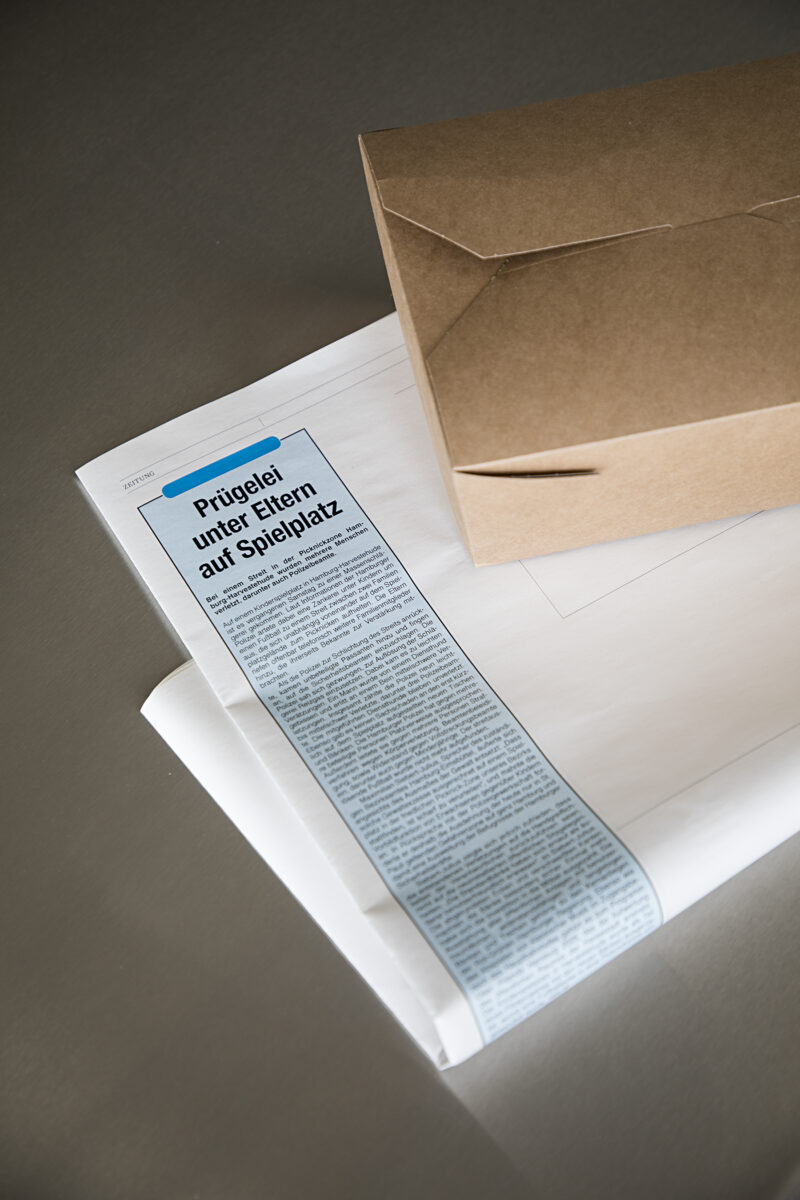
In addition, Tieu’s fiction-reporting plays an important role in establishing connections between individual objects in each work, as well as across her various installations. In this vein, an article in Formative Years on Dearth titled ‘Inside the Blocks’ describes an image of the interior of an asylum quarter. This description is based on a real photograph of the artist and her mother in an asylum complex in the district of Hohenschönhausen in Berlin where they resided after arriving in Germany in 1992. This very same photograph appears on the shelves in Zugzwang. Here, it converses with the aforementioned article, ‘Manning The Deck’, pinned on a mirror next to the desk. The latter details the life and family of bureaucrat James Stevens, mentioning his Vietnamese wife and daughter living in London. It, in turn, also references a “pig” under the Steven’s desk reminding him “not to waste other people’s money.” Surely enough, a piggy bank may be found on the shelves of Zugzwang, thus continuing to promulgate connecting threads and referential ‘layers’ which germinate from Tieu’s texts.
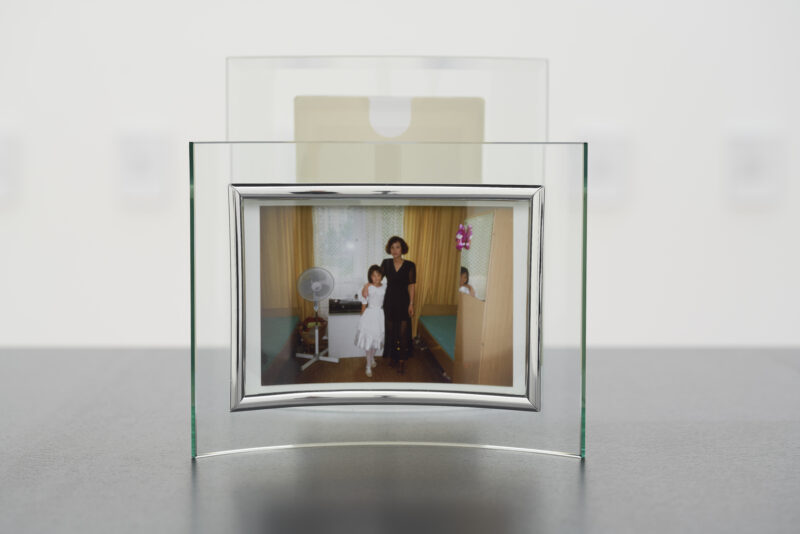
Meaningful Readymades
Tieu’s layered meanings and references culminate in her use of readymade objects which recur across the majority of her previous works. The installation Loveless offers a strong case in point, featuring a prison bench with a scattered arrangement of food and drink containers. At first glance, it is unclear which objects are part of the artwork; only by observing the installation’s sonic nature (Tieu hid speakers inside the containers) does it become clear that the all items, no matter how mundane, are part of the assemblage.
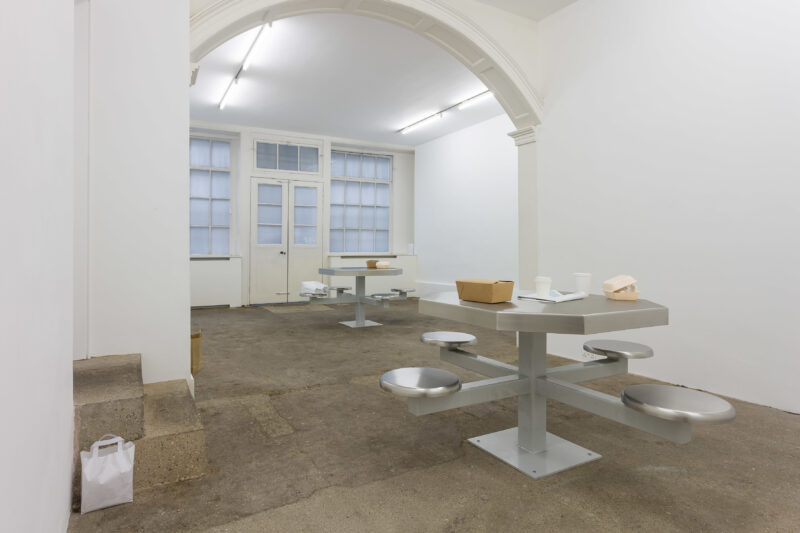
Likewise in Zugzwang, a plethora of everyday objects populate the exhibition; a mug rests atop one of Tieu’s fictional reports, magnets are clipped onto a board, and a bin filled with crumpled paper resides on a bottom shelf. While some of these items were sourced from daily contexts or purchased (a globe, first aid kit, filing unit), others were specially brought in from the artist’s studio and mother’s home (most notably, a jewellery box with a one cent coin, a pair of Tieu’s mother’s shoes, photographs and an original buggy from the artist’s childhood).
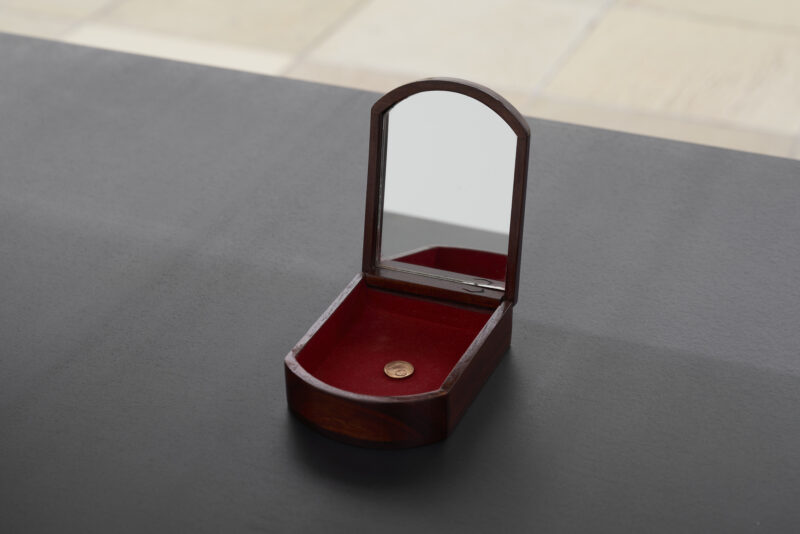
The use of personal belongings is not new to Tieu’s works. In Song for Unattended Items, the artist presented an arrangement of abandoned bags filled with her own belongings as commentary on public surveillance in the wake of terrorism. Yet, the personal value was not stressed as Tieu’s clothes, medication etc. remained hidden inside the bags. In contrast, priceless personal possessions are highlighted and used to convey the evolution of the artist’s practice in Zugzwang; a bouquet of plastic flowers from her mother’s home references not only the sanctity of home life, but also one of Tieu’s earliest actions, Troi Oi (2014). Here, the artist staged an action within various Vietnamese-owned flower shops across public transport stations in Berlin - a surviving remnant of a once informal economy developed by Vietnamese communities in Germany facing a lack of alternative income sources.
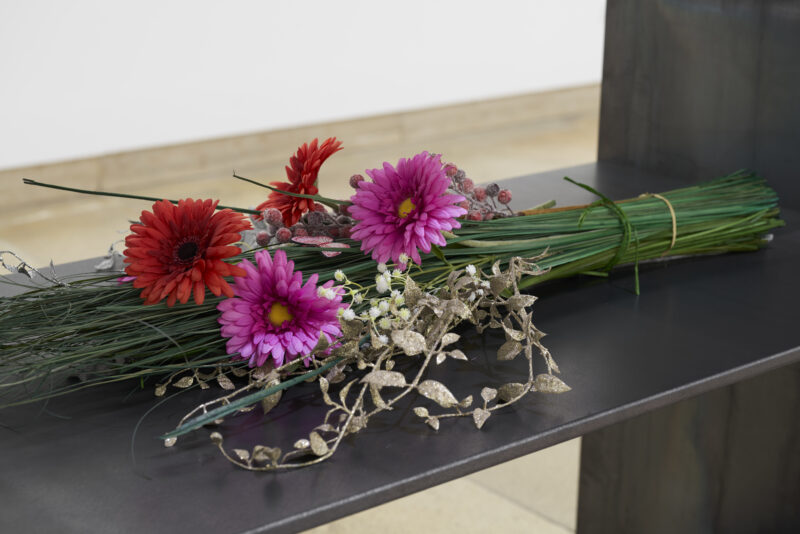
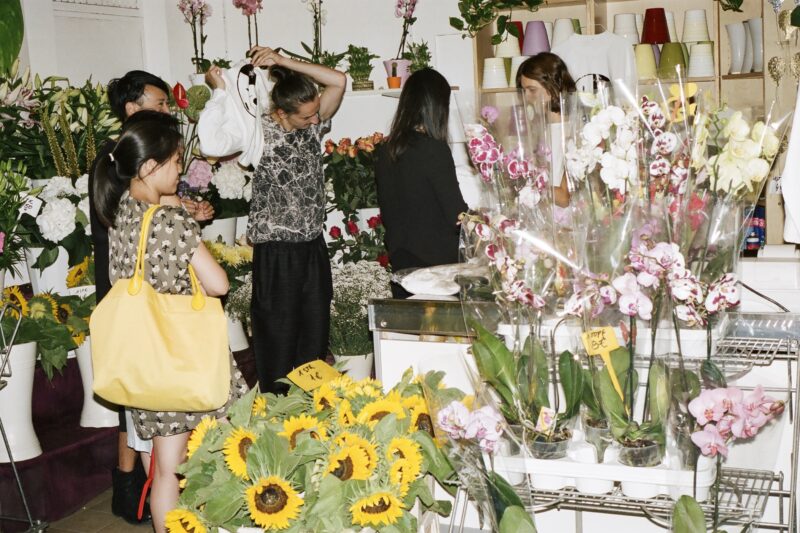
Zugzwang also features mugs with the text “moral inversion”, a quotation from the book Unmasking Administrative Evil (1998) by Guy B. Adams and Danny L. Balfour which explores dehumanising and abusive processes in administrative procedures. In the context of Zugzwang, these mugs reflect the artist’s interest in how everyday commodities represent the intertwining of economies between the Third World and First World. They moreover represent a rare instance in which she designs objects for her installations. Preferring instead to use readymades, these mugs mirror two previous occasions on which Tieu has designed commodity-like items: sweatshirts for the action Troi Oi, and an MP3 player for the site-specific work Subnational MP3 at the Dong Xuan Centre, a large-scale Vietnamese market in Berlin.
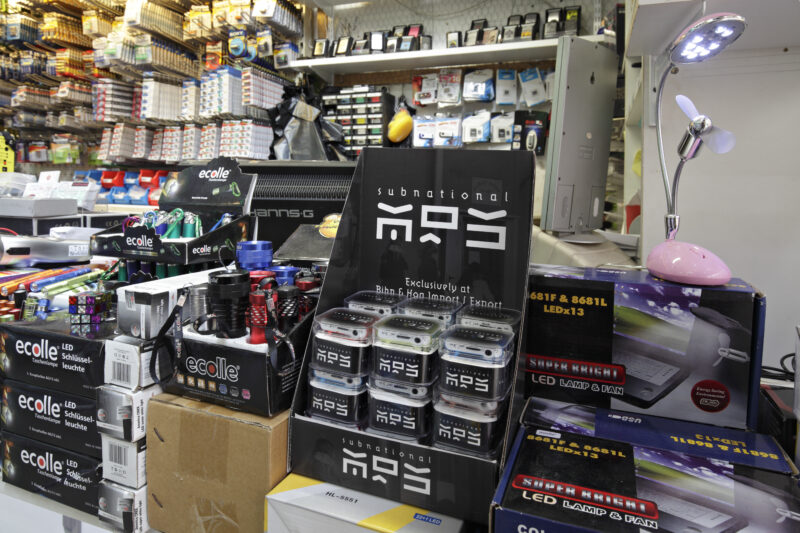
Paying attention to such details, each individual object reveals a crafty myriad of layered references. These contextualise Zugzwang not only amongst the numerous subjectivities and protagonists which the exhibition narrates, but also across diverse spaces and temporalities linked to Tieu’s past works. Although the installation currently resides within the monumental space of Haus der Kunst in Munich, it offers an imaginary entry into the markets and working class housings of Berlin, the artist’s familial home, and the countless temporary residences of a contemporary artist working transnationally.
Dr Eva Bentcheva is an art historian and curator with a focus on transnational conceptual and performance art. She was formerly the Goethe-Institut Postdoctoral Fellow at Haus der Kunst (2018-19).
Capsule 11: Zugzwang by Sung Tieu is curated by Damian Lentini, with curatorial assistance from Lisa Paland. It is on display at Haus der Kunst from 31 January – 21 June 2020.
